Achieving excellent fitness over 50 doesn’t require you to be a “gym rat” who spends 2 hours a day, 6 days a week slaving away in the gym in pursuit of results.
In fact, that’s the worst way to boost your level of fitness when you’re over 50. When you’re over 50 your body needs more recovery time between intense workouts than when you’re 20.
Besides, now that we’re over 50, who wants to spend 12 hours a week in the gym, if you can get great results in only 90 minutes a week?
Many people are skeptical that only 90 minutes a week working out can produce excellent fitness results. But the over-50 clients I work with are doing exactly that. Here’s what one recently had to say:
“I’m still rocking this program you have opened my eyes to! I feel really good. Not only do I see the physical changes but so does my wife. The duration is perfect for my schedule. I love the program! ” Jay, New Hampshire USA
This post will go over how to improve functional fitness via progressive resistance exercise in 45 minutes twice a week.
Related Content on how to achieve fitness over 50:
- 10 Home Gym Essentials On A Budget For Full Body Workouts To Get You Strong Really Fast
- Is It Even Possible To Build Muscle Over 50?
- Super Effective Workouts For Men Over 50 (That Won’t Take All Day To Do)
How to achieve excellent fitness over 50 in 90 minutes a week
Strength training is the foundational component for fitness over 50
There are 4 components of Physical Fitness: muscular strength, cardiovascular endurance, flexibility, and body composition (percentage of body fat).
Of the 4, muscular strength is the one that holds primary importance. Strength is called upon more often in life than cardiovascular endurance or flexibility, and plays a central role in body composition.
So strength training should be the foundational component of your overall fitness plan.
And a properly performed strength training program will positively affect cardiovascular endurance, flexibility, and body composition, but endurance training, stretching, or dieting do not improve muscular strength.
Strength training gives you the biggest “bang for your buck”, and done properly requires very little time – under 45 minutes a couple times a week.
Maintain mobility and build a base of strength
To build a base of strength, we want to not only strength train the large, superficial muscles of the body, which are readily visible, but also the smaller deep muscles of the body, which serve to hold us together and protect us from injury. So a good strength training workout for someone over 50 will include exercises for both.
For the large superficial muscles I mentioned, you can cover your full body with 5 different movements:
#1. Lower body push
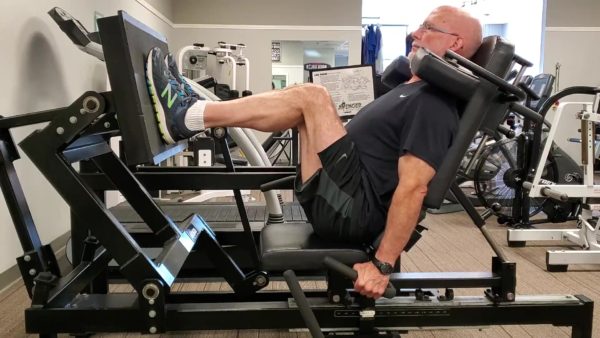
#2. Lower body flexion
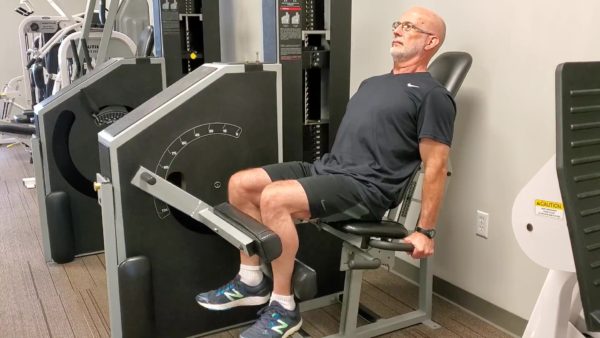
#3. Upper body push
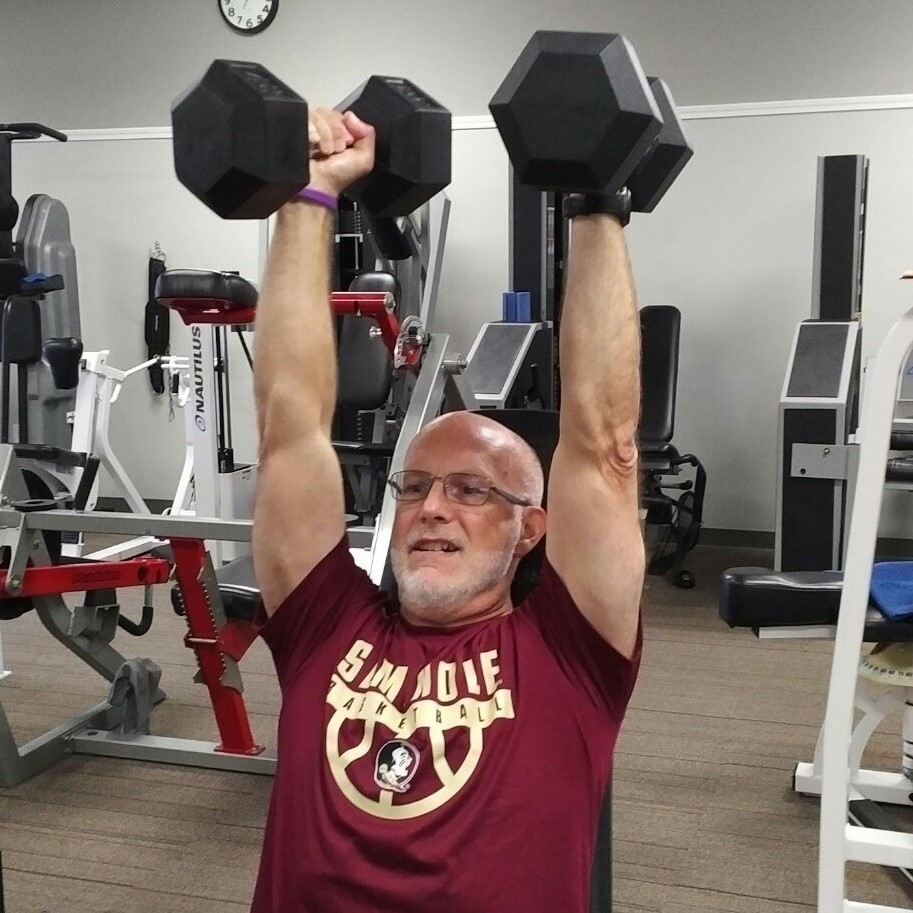
#4. Upper body pull
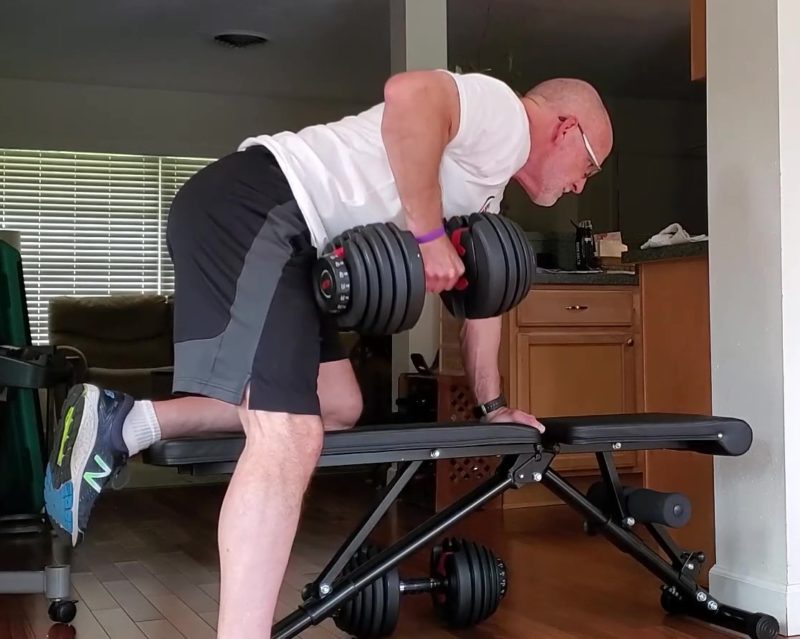
#5. Midsection – Ab crunch, back extension
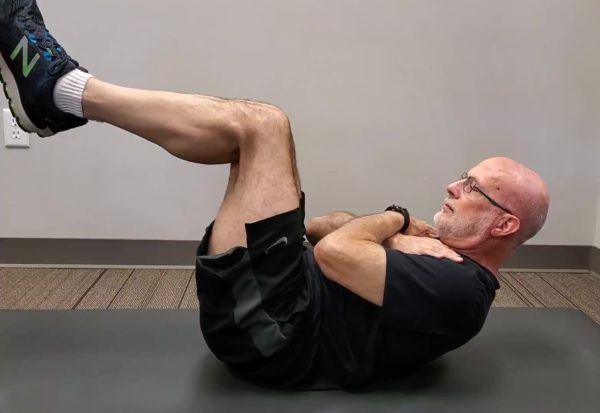
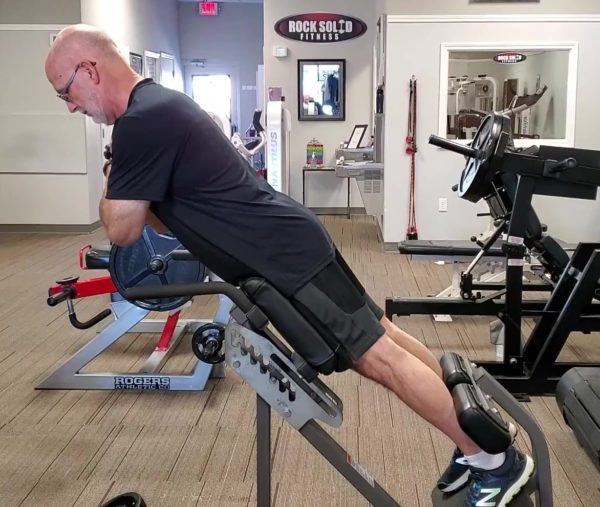
Now we move on to the smaller deep muscles of the body, such as the rotator cuff muscles of the shoulder, the neck muscles, or the gripping muscles in our hands. I call exercises for these muscle groups Rebuilding exercises.
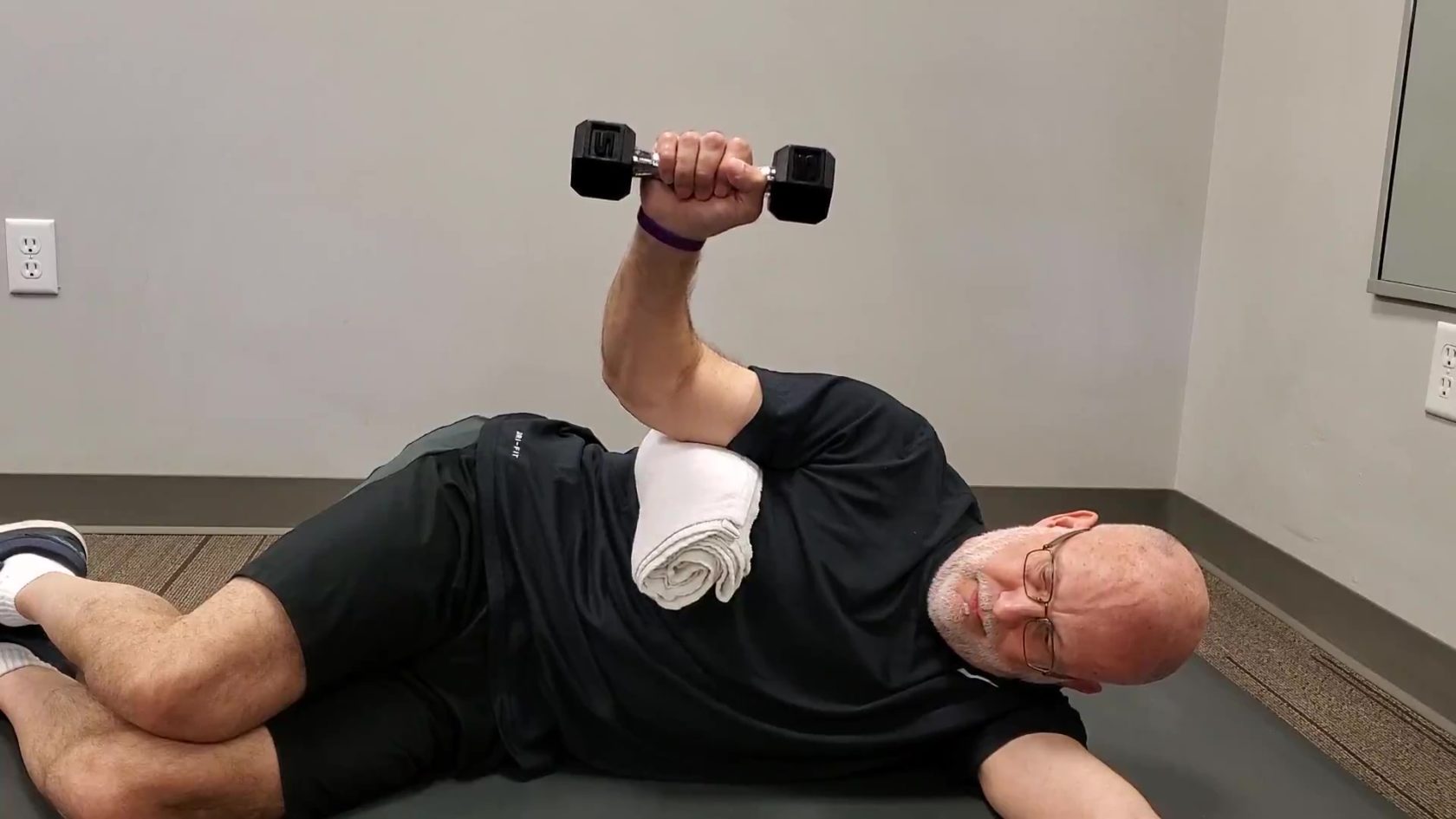
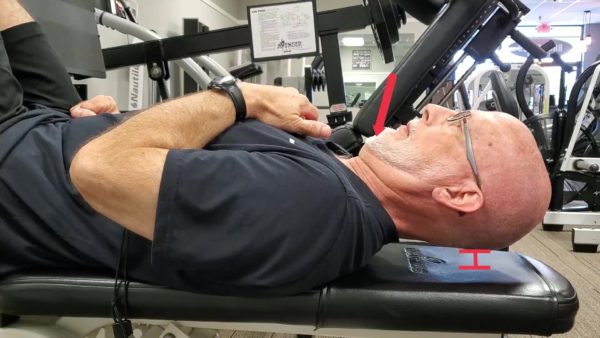
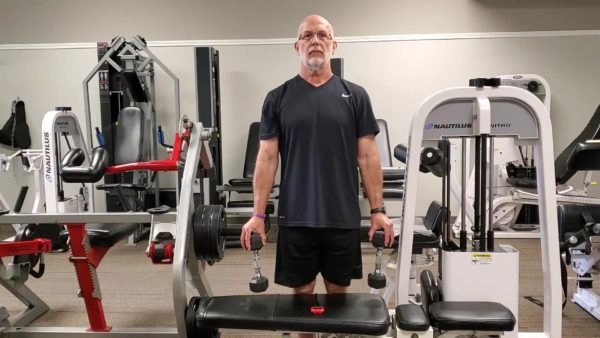
You want to pick exercises for areas of your body that have either been injured in the past, or that you feel are especially vulnerable to injuries in the future. So the exact exercises vary based on each individual’s personal situation, medical history, and available equipment.
I usually recommend 3 of these rebuilding exercises per workout, bringing the total number of exercises performed to 8.
Perform one set of each exercise using controlled, momentum-free reps with a maximum effort, meaning at the end of the set you can’t perform even one more rep with good form.
Once you get the hang of things, this whole process takes under 45 minutes, and you only need to do it twice a week.
Schedule an appointment with yourself, and commit to keeping it no matter what. Try to have 2-3 days between strength training workouts, i.e. strength train on Monday/Thursday, Tuesday/Friday, Wednesday/Saturday etc.
To maintain mobility, right after the strength training workout is a great time to do a little stretching, especially for the shoulders and hips, which can lose 6 degrees of range of motion per decade after age 55. (See the study here)
You may not be aware of physical changes that can make your old workout risky
By now you can probably tell that the strength training routines you used in your 20’s aren’t cutting it anymore. Your body is different now.
You start feeling the effects of age-related wear and tear on your 50- or 60-year-old body. Injuries from the past are coming back to haunt you with chronic aches and pains, and new injuries are much harder to recover from.
Exercises you might have loved in your 20’s now might cause too much pain to perform with any meaningful resistance. So you have to make adjustments to your strength training program to reflect these changes.
For example, performing a lower body pushing exercise on a leg press machine is a much safer option than performing barbell squats. When you’re young, you may be willing to accept that risk, but when you’re older not so much because injuries are so much harder to recover from.
Fitness Over 50: Effective Strategies for Health and Wellness
Maintaining physical fitness after the age of 50 is vital for overall health and quality of life. Starting a fitness routine at this stage can help reduce the risk of chronic diseases and combat age-related muscle loss and joint pain. Whether you are new to exercise or looking to tailor your fitness activities to your current age, there are numerous effective strategies that can be adopted to keep you in top shape.
As you begin your fitness journey after 50, incorporate strength training and flexibility routines. These types of exercises are not only essential for maintaining muscle mass but also for improving joint health and overall mobility.
Attention to nutrition and recovery is equally important for achieving optimal performance and health benefits.
Adopting a comprehensive fitness plan can have a long-term positive impact on your physical and mental well-being. It’s never too late to start, and the benefits you gain will enhance your quality of life even further as you age.
Starting Your Fitness Journey After 50
Embarking on a fitness journey after the age of 50 requires careful consideration of your health, realistic goal setting, and establishing a sustainable workout routine. This ensures that your efforts promote health and minimize the risk of injury.
Consulting With Healthcare Professionals
Before starting any new exercise program, it is prudent to consult with your doctor. They can help identify any underlying conditions or potential risks. Discussing existing health issues, such as chronic pain or past injuries, is crucial for creating a safe and effective workout plan.
Setting Realistic Goals
Setting achievable goals is essential for staying motivated and avoiding frustration. Begin by identifying what you want to accomplish, whether it’s increasing strength, improving cardiovascular health, or losing weight. Make sure your goals are specific, measurable, attainable, relevant, and time-bound (SMART).
Consider starting with small, manageable milestones. This approach allows you to gradually build up your fitness level. Celebrate each achievement to maintain enthusiasm and momentum in your journey.
Creating a Sustainable Workout Routine
Developing a workout routine that you can maintain over the long term is vital for lasting success. Incorporate a mix of strength, flexibility, and cardiovascular activity to address all aspects of fitness. Activities such as walking, swimming, or yoga can be beneficial and enjoyable.
Listen to your body and allow adequate time for rest and recovery. Adjust your routine as needed to keep it engaging and aligned with your fitness goals.
Types of Exercises for Individuals Over 50
Incorporating a variety of exercise routines is essential for overall health, especially as you age. Key activities include strength training, flexibility exercises, and low-impact cardiovascular activity.
Cardiovascular Activities
Engaging in cardiovascular activities improves cardiorespiratory fitness. Walking is one of the most accessible forms, promoting endurance without stressing your joints. Swimming offers a full-body workout while reducing stress on bones and muscles due to water buoyancy.
Cycling, whether outdoor or on a stationary bike, enhances heart health and leg strength. Varying your cardiovascular activities can help prevent boredom and promote sustained participation.
Strength Training Essentials
Strength training is vital for maintaining muscle mass and bone density. Use free weights resistance bands or weight machines as an alternative, performing controlled movements to reduce injury risk.
Perform strength exercises one or two times a week, with at least 2 rest day between sessions. Focus on all major muscle groups, ensuring balanced muscle development and preventing imbalances that can lead to injuries.
Flexibility and Balance Exercises
Flexibility and balance exercises can reduce the risk of falls and improve daily living activities. Yoga and Tai Chi are excellent choices. Yoga increases flexibility through a series of poses and stretches, while Tai Chi enhances balance and coordination through slow, controlled movements.
Consistency is key to gaining the maximum benefits.
Low-Impact Activity
Low-impact workouts are easy on joints while effectively improving fitness. Swimming and cycling are excellent low-impact choices, allowing for a robust cardiovascular workout without undue joint stress.
Walking remains a cornerstone low-impact exercise. For variation, give elliptical machines or aqua aerobics a trial. These activities provide significant health benefits while minimizing the risk of injury and joint pain.
In conclusion, diversifying your fitness routine can greatly enhance your overall health and well-being. Each of these exercise types offers unique benefits, contributing to a holistic approach to staying strong and healthy over the age of 50.
Nutrition and Recovery for Optimal Performance
Optimal performance over 50 relies heavily on both nutrition and recovery strategies. Focus on consuming the right nutrients and employing effective recovery methods to boost energy levels, improve mood, and reduce the risk of injuries such as strains and fractures.
Importance of Nutrition
A balanced diet is crucial to supporting your fitness goals. To maintain muscle mass and function as you age, consume enough protein. Incorporate lean meats, legumes, and dairy into your meals.
Proper hydration is key. Drink plenty of water to help regulate body temperature and transport nutrients.
Eating the right mix of carbohydrates and healthy fats can sustain your energy levels throughout your workouts. Whole grains and avocados are excellent choices.
Proper Recovery Methods
Recovery time is essential for preventing injuries and allowing muscles to repair. Aim for at least 48 hours between intense workout sessions.
Incorporate stretching and low-impact activities to maintain flexibility and reduce the risk of strains. Gentle yoga and walking are good options.
Sleep is critical. Aim for 7-9 hours of restorative sleep to enhance muscle recovery and improve mood. Lack of sleep can lead to fatigue and higher risk of heart attacks.
Health Benefits and Long-Term Impact of Fitness Over 50
Regular physical activity for those over 50 offers significant rewards. Both physical and mental health benefits can be reaped from consistent exercise.
Physical Health Advantages of fitness over 50
Engaging in regular exercise can lead to numerous physical health benefits. For instance, it can help lower blood pressure and improve metabolism. Consistent physical activity can also reduce the risk of heart disease and manage diabetes.
Maintaining a healthy weight is crucial, and exercise helps in controlling weight and combating obesity. Additionally, regular activity can increase bone density, which may reduce the risk of osteoporosis and improve joint health, alleviating conditions like arthritis.
Mental and Cognitive Benefits of fitness over 50
Exercise has a profound impact on your mental health. It can help alleviate symptoms of depression and anxiety, contributing to better mental health. Moreover, engaging in physical activity is associated with improved cognitive function.
Participation in regular exercise routines can enhance your longevity and quality of life. Studies show that staying active can reduce mortality rates and offer benefits well into older age. Keeping both mind and body active is crucial for long-term wellness and a fulfilling life.
Frequently Asked Questions
Exploring fitness strategies and routines for individuals aged 50 and above can significantly enhance health and well-being. Focus on effective exercises, tailored programs, and specific guidelines for both men and women.
What is the best fitness for a 50 year old?
Engage in a mix of aerobic activities, strength training, and flexibility exercises. Walking, swimming, and cycling are excellent for cardio health. Incorporate strength training exercises like weight lifting to maintain muscle mass. Stretching and yoga help improve flexibility and prevent injuries.
How can women over 50 optimize their fitness routines?
Women over 50 should focus on weight-bearing exercises to maintain bone density, such as resistance training. Adding exercises like Tai Chi or Yoga can enhance balance and flexibility. Consistent workouts are recommended for maintaining overall fitness.
How many times a week should a 50 year old workout?
Strength training exercises should be performed on two days a week. It’s important to include rest days in the routine to allow for recovery and prevent overuse injuries. Once you get the hang of things, this whole process takes under 45 minutes, and you only need to do it twice a week.
Also aim for 2 days a week moderate-intensity aerobic activity per week, such as brisk walking or swimming.
Are there specific fitness programs tailored for people over 50?
Yes, there are fitness programs specifically designed for individuals over 50. These programs offer strength training workouts for home or in the gym, and are tailored to address the unique fitness needs of older adults. Click here to learn more.
Can you reshape your body at 50?
Start with a balanced diet rich in vitamins and minerals to support exercise routines. Incorporate both cardiovascular and strength training exercises into your weekly routine. Consistency is key. Gradually increase the intensity of strength training and duration of cardiovascular workouts to see continuous progress and effective body reshaping.
Myth: “I haven’t exercised my whole life, it’s too late to start”
Right now is the only time we have. 5 years from now you’ll be saying the same thing, and wish you would have started today. The aging process doesn’t stop!
None of use have a time machine to go back and start over. Start now, you’ll be glad you did, and on the right program you’ll see immediate, dramatic and consistent results right from your very first workout.
Make exercise a priority in mid-life for fitness over 50
To stay healthy and maintain a high level of fitness over 50, 60 and beyond, perform a high-intensity (but safe) strength training and stretching program twice a week, and engage in low to moderate intensity activities of your choice (like hiking, biking, brisk walking etc.) 2-3 times a week.
Schedule appointments with yourself, and commit to it no matter what.
Do this consistently and you will enjoy a full, active life for many years to come.


2 Comments. Leave new
Hi Dave,
Great article! Question for you: is it normal to feel wiped out after a workout? Here’s what usually happens to me: I do a full body strength workout as described in this article on Monday evening. I’m pretty worn out after the workout. On Tuesday I feel really drained, sluggish, tired, maybe a little sore. Wednesday I still feel tired and sluggish but not as bad as Tuesday. Thursday I’m almost back to normal. Friday I feel ready to go. Just want to make sure I’m not pushing myself too hard on Monday. Thanks!
Hi Jim, what you’re describing sounds to me like someone who’s been training for a long time, trains with absolute maximum intensity, and is at or near the limits of their genetic strength potential. So if that’s you, congrats, I commend you! My only suggestion would be trying to dial in your post-workout nutrition a little better, including a post-workout snack with 20 or more grams of protein within an hour after the workout, to facilitate better recovery if that’s possible at this point.